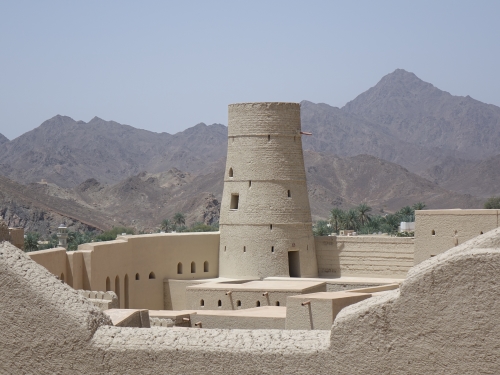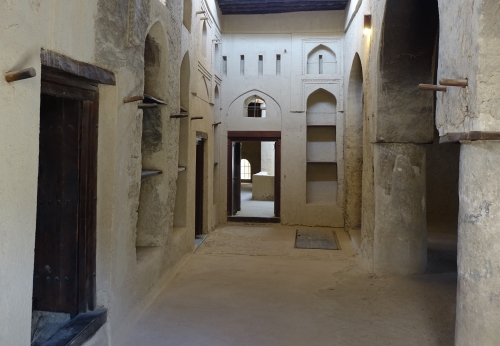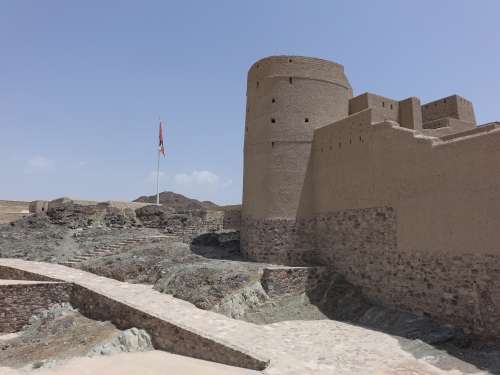Blog WHS Visits
WHS #656: Bahla Fort
Bahla Fort dates back to the late Middle Ages, and was the stronghold of a tribe that controlled this region and the trade in incense. The fort and its oasis (with date palms, old houses and a mosque, which also are in the core zone) are surrounded by a 12 km long wall. In Oman, that is densely covered by fortresses, this is said to be one of the largest and oldest.

The fort can easily be reached in half an hour from Nizwa, Oman’s second tourist capital behind Muscat. It lies along the main road and is so huge that it cannot be overlooked. Parking is at the far end (at the Souq side). When you read the previous reviews on this website, that steadily have been added since at least 2005, its slow development into a popular tourist attraction becomes clear. It has fully reopened in 2012 and is now open every day from 8-16, except Friday afternoon. The story goes that the Omani’s rebuilt parts of the fortress according to their own insights, because there were no drawings or photographs left of the whole structure.
Six years after reopening, still no exhibits, labels or information panels have been added to the fort. I can do without exhibits like plastic mannequins dressed up in traditional clothing, but a bit more background information about what you are looking at would be nice. It seems they just don’t know for sure as well: "... there are different opinions in locating these parts even in the best-published studies on the Castle" (according to the official website)

What I saw inside the fortress:
- a mihrab
- wind towers (photo 1 above in this review)
- reception rooms of the "Bayt al-Hadith" (this one has a label above its door!)
- rooms with many niches (photo 2): private rooms for family members as in other forts?
- something like an altar or a bath?
What should be there as well, according to various sources:
- horse stables (unesco website)
- seven water wells (official website)
- prisons (official website)
- library (our connections)
- bath house (our connections)
- large date room, like a wine cellar
- ‘Philistine altar’
- former place of prayer which has a small opening pointing at Mecca (possibly this?)
The last 3 options come from this website, which has more detail than most but has no specific link between its photos and text (so you still don’t know what you’re looking at).

The only ones that are happy about all those empty rooms and niches are the bats that have found their home in Al-Qasabah, the oldest part of the fort. In several of the rooms I saw them hanging against the walls in groups.
Els - 11 April 2018